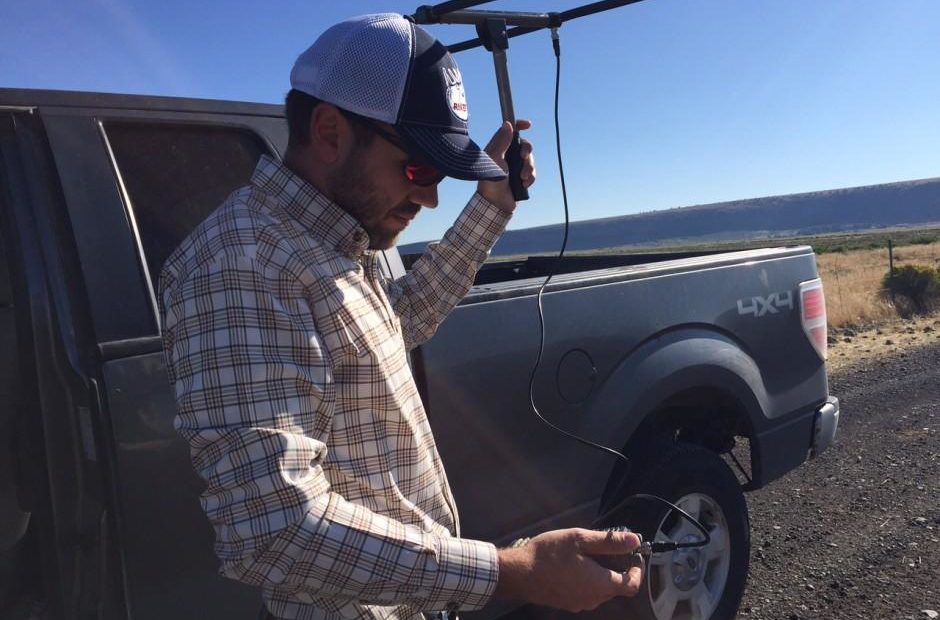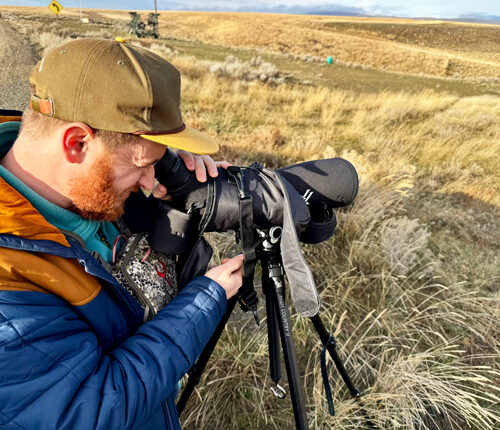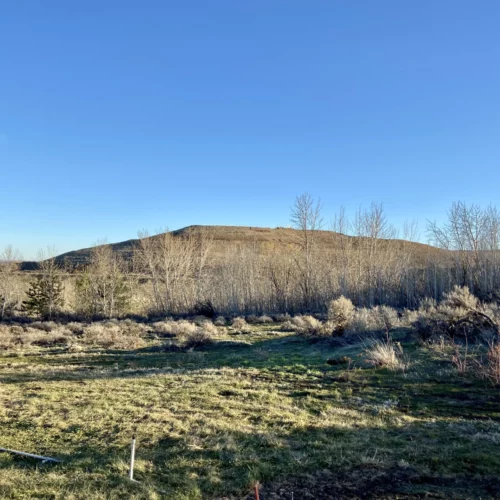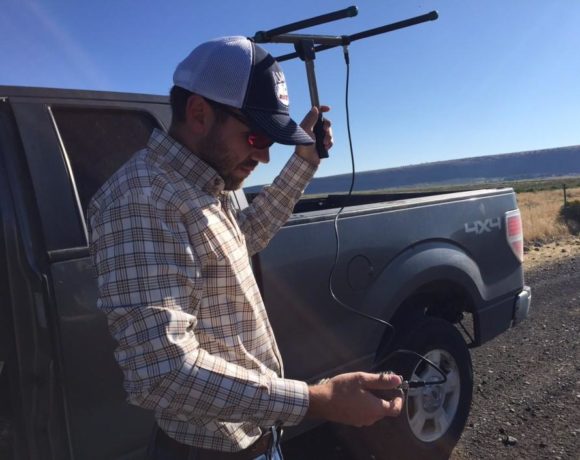
Can Ranchers Use Conservation To Keep Sage Grouse Off The Endangered Species List?
Listen
The plight of greater sage grouse is at the top of mind for ranchers, conservationists and politicians across the West — so much so that one ranch in southeastern Oregon has put a wildlife biologist on its payroll.
Andrew Shields roams the Roaring Springs Ranch in Harney County every day, monitoring the progress of the imperiled bird.
“I see more wildlife species than people, and I don’t think many folks can say that — wildlife biologist or not,” Shields said.
One recent day, he turned his dusty pickup truck down a bumpy dirt road. Cows stared as he slowly drove by. Shields stopped his truck next to a green wetland fed by the Roaring Springs Creek. For sage grouse and other wildlife seeking out protein-rich vegetation, the wetland is an oasis in an otherwise arid landscape.
Shields had followed a radio-collared female sage grouse here. The ranch has nine active and two abandoned sage grouse breeding grounds, known as leks.
“The first or second week of July she came back to this spot. This is where we caught her last fall,” Shields said. “So she’s moving 30 miles from her lekking area to her summering area to find the green. Everywhere else in the valley is dry now.”
The radio and GPS collars have helped Shields figure out what parts of the ranch are providing good habitat for roughly 800 sage grouse. That helps him know how to help the birds survive — which he sees as key to maintaining the ranch’s bottom line.
The ranch has cut down juniper trees, seeded bunch grass, used controlled burns to improve habitat — the kind of conservation work that ranchers are voluntarily doing throughout the West.
“We sure are willing to work with folks on coming up with solutions,” Shields said. “We feel like from the ground up is the way that things should be done.”
For most ranchers and others involved in the effort, the ultimate goal is to keep the sage grouse off the endangered species list, to avoid a repeat of the economic hardships and court battles that Northwest lumber towns faced after northern spotted owl was added to the list in 1990.
To do that, 11 Western states must convince the U.S. Fish and Wildlife Service that they’ve taken enough actions to stop the sage grouse’s precipitous decline.
At a recent meeting in Burns, Oregon, the state Department of Fish and Wildlife presented a new rule to guide large-scale development in the most important sage grouse habitat areas — development like mining and wind farms.
The state has said these new rules will provide the certainty that federal regulators are looking for when it comes to protecting sage grouse from changes to their most important habitat areas.
Tensions ran high at the meeting.
“All the sudden we got all these different rules. Rules, rules, rules,” one rancher commented from the back of the room.
Over the past few years, ranchers all across Harney County have agreed to conserve land for sage grouse. In exchange, the government agreed not to hit them with new restrictions later, should the sage grouse be placed on the list of threatened or endangered species.
These agreements are called Candidate Conservation Agreements with Assurances, or CCAAs. And they’re a big reason ranchers at the meeting weren’t happy with Oregon’s new rules, said Steve Grasty, Harney County’s judge.
“Folks are confused. They’re angry. I don’t blame them,” Grasty said. “I think part of the solution that the state could easily do is say, if your land is being managed under a CCAA, that you are exempt from this rule.”
Brett Brownscombe, deputy director with the Oregon Department of Fish and Wildlife, told ranchers their operations are unlikely to be affected by the new rules. But he said he understood why they were so anxious.
“This is one of those things where democracy, when it happens, is often a spicy meal. I think you all have very legitimate reasons to feel like there’s a lot at stake in the future here,” Brownscombe said.
At the Oregon Fish and Wildlife Commission’s rule-making meeting on Monday, commissioners said they’d like to clarify the rule and add an exemption for agricultural land that’s being used for agricultural purposes. The commission passed the new rule. The Oregon Land Conservation and Development Commission the previous week passed a supplementary rule.
Once the states turn in their plans, it’s going to be up to the federal government to decide if the states have done enough to keep the sage grouse off the endangered species list.
Back at Roaring Springs Ranch, Shields said he wants to be able to continue his work preserving habitat and helping the greater sage grouse from the ground up.
“I think the Fish and Wildlife Service has a chance to change the way things are done. I don’t know if it will happen or not, but I sure hope it does,” he said.
The U.S. Fish and Wildlife Service said it will make a listing decision Sept. 30.
Copyright 2015 EarthFix
Related Stories:

Canadian leaders hope trade negotiations won’t derail Columbia River Treaty
A view of the Columbia River in British Columbia. The Columbia River Treaty is on “pause” while the Trump administration considers its policy options. However, recent comments by President Donald

Searching for sage grouse: Looking for a chicken-sized needle in south-central WA
Seth Hulett, Audubon Washington’s senior program manager of the Columbia Plateau, searches through his spotting scope for sage grouse. (Credit: Courtney Flatt / NWPB) Listen (Runtime 4:12) Read In south-central

Landfill neighbors worry about PFAs contamination seeping into drinking water
A view of the landfill from Carole Degrave’s property line. (Credit: Courtney Flatt / NWPB) Listen (Runtime 0:54) Read For years, some people who live near a Central Washington landfill















